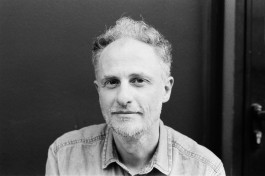Biennale de la photographie de Mulhouse
'En pleine nature'
Terri Weifenbach and Vanessa Cowling
June, 204
Terri Weifenbach's exhibition is a walk punctuated by images that breathe new life and new colors into the landscape. The works fit almost symbiotically into the place and highlight the views as if they were many different alternating faces of nature. The photos first echo the banks of the river - which flows like an entropic and ineluctable destiny approaching - then the sides of the hills where for centuries, as in a painting, history has manifested itself as inhabitants through their close bond with the land and the sky, where all the water comes from. Taken from the Clouds Physics project, the photographs are a hymn to atmospheric song and to meteorology that studies its expressions and whims, on which the fate of life often depends. In this multiplicity of observation points there is a synthesis of the human condition.
Terri's installation is situated on an infrastructure that connects Thann's present and past. It does so by crossing a constant historical landscape that has its roots along the flow of the river, or in the water. Water is the focus of observation in the Clouds Physics project. The installation is a visual interference that engages those walking in a dialogue and creates an immersive experience where the works are like magnifying glasses, or sometimes natural glitches.
Vanessa Cowling's installation is a visual sculpture that interferes with the City Hall building, promoting its permeability. It provides a message extolling transparency and sustainability as a virtue of good political conduct. The South African artist's practice is steeped in research into the use of materials that are not harmful to human health and the environment, and therefore embodies an authentic sense of responsibility towards the next generations who will set foot on these lands. In Vanessa Cowling's images, the leaves, roots and branches express themselves, welcoming light and solar energy, letting them pass, reducing the distance between those inside and those outside the building. The installation invites us to a phytocentric perspective, in which nature is not exclusively at the service of man but in continuous osmosis with him. This vision underlines the importance of territorial governance which is based on awareness of our actions and their impacts. The internal garden recreated by Vanessa invites a vital flowering in our homes, in our spaces. A "vegetal" self-portrait that documents various encounters, personal events and memories through flowers. These images fix like organic fossils, an attempt to conserve and remember. But it is also a reflection on the fact that sooner or later we accept that flowers fall, that life falls and that we cannot hold it for long, as sensitive paper does with light. And so what matters is perhaps transferring it to those who come after us. So that other flowers can sprout, and other memories nourish existence.

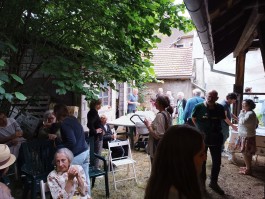
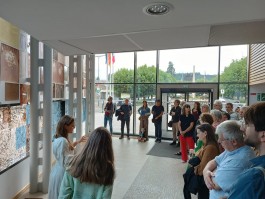
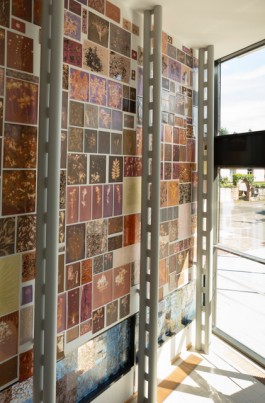

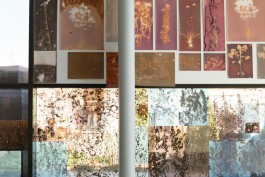
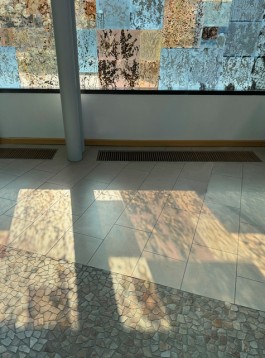
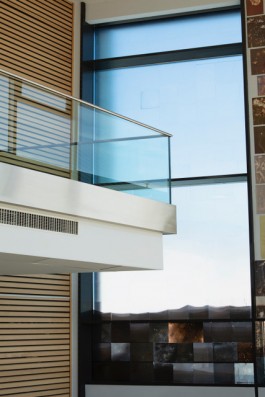
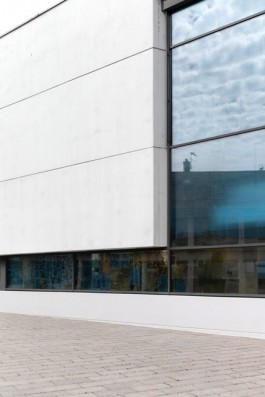
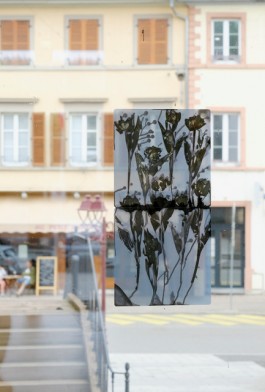
Biennale de la photographie de Mulhouse
'En pleine nature'
Terri Weifenbach and Vanessa Cowling
June, 204
Terri Weifenbach's exhibition is a walk punctuated by images that breathe new life and new colors into the landscape. The works fit almost symbiotically into the place and highlight the views as if they were many different alternating faces of nature. The photos first echo the banks of the river - which flows like an entropic and ineluctable destiny approaching - then the sides of the hills where for centuries, as in a painting, history has manifested itself as inhabitants through their close bond with the land and the sky, where all the water comes from. Taken from the Clouds Physics project, the photographs are a hymn to atmospheric song and to meteorology that studies its expressions and whims, on which the fate of life often depends. In this multiplicity of observation points there is a synthesis of the human condition.
Terri's installation is situated on an infrastructure that connects Thann's present and past. It does so by crossing a constant historical landscape that has its roots along the flow of the river, or in the water. Water is the focus of observation in the Clouds Physics project. The installation is a visual interference that engages those walking in a dialogue and creates an immersive experience where the works are like magnifying glasses, or sometimes natural glitches.
Vanessa Cowling's installation is a visual sculpture that interferes with the City Hall building, promoting its permeability. It provides a message extolling transparency and sustainability as a virtue of good political conduct. The South African artist's practice is steeped in research into the use of materials that are not harmful to human health and the environment, and therefore embodies an authentic sense of responsibility towards the next generations who will set foot on these lands. In Vanessa Cowling's images, the leaves, roots and branches express themselves, welcoming light and solar energy, letting them pass, reducing the distance between those inside and those outside the building. The installation invites us to a phytocentric perspective, in which nature is not exclusively at the service of man but in continuous osmosis with him. This vision underlines the importance of territorial governance which is based on awareness of our actions and their impacts. The internal garden recreated by Vanessa invites a vital flowering in our homes, in our spaces. A "vegetal" self-portrait that documents various encounters, personal events and memories through flowers. These images fix like organic fossils, an attempt to conserve and remember. But it is also a reflection on the fact that sooner or later we accept that flowers fall, that life falls and that we cannot hold it for long, as sensitive paper does with light. And so what matters is perhaps transferring it to those who come after us. So that other flowers can sprout, and other memories nourish existence.










